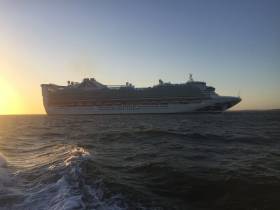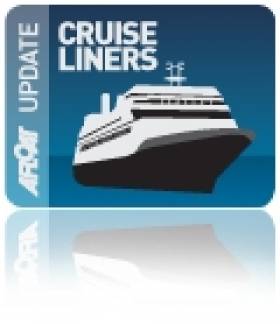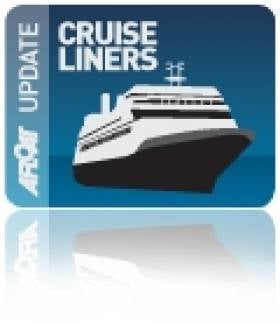Displaying items by tag: Stormont Wharf
Biggest Cruise Season in Belfast Port Set to Become Busier in 2018
#CruiseLiners - The biggest cruise season in Belfast Port took place last year and 2018 is set to be even busier as cruiseships call in several months time, writes Jehan Ashmore.
A total of 94 cruise ships according to Belfast Harbour Commissioners, had docked with over 156,000 passengers visiting the city and beyond.
The largest and longest cruiseship visitor Regal Princess at 330m as previously reported on Afloat docked alongside Stormont Wharf Extension. The wharf's extension which was completed in recent years is just 20m longer than the cruiseship which demonstrates such large sized cruiseships.
On board were 3,600 passengers who had sailed overnight from Greenock, Scotland as part of a 26 day Copenhagen to New York Cruise. The cruise included visits to locations in Russia, Norway, Germany, Estonia, Finland, Sweden and Denmark.
Other large callers last season included another Princess Cruises giant, the 'Grand Class' Caribbean Princess and rivals Celberity Cruises whose 'Soltice' class Celebrity Eclipse made an appearance. Asides these big brand names, other operators were Silversea, Majestic, Fred Olsen and relative newcomer Cruise & Maritime Voyages (CMV).
A list of cruise callers visiting Belfast this season will according to the BHC website will be made available soon through this link.
#CRUISE LINERS – This year Belfast Harbour can look forward to a boost in the cruise sector as more than 40 calls are scheduled during the season, the increase is largely attributed to the opening of the iconic visitor attraction of Titanic Belfast, writes Jehan Ashmore.
In 2012 the port is to see an impressive 32% increase on last year with 41 cruise ships bringing almost 75,000 visitors to the port compared to 2011 where 32 ships called with 58,000 passengers.
The ports cruise facility at Stormont Wharf, which cost £10m, continues to pay dividends with its advantage of accommodating large cruise ships operating in the Irish Sea. The wharf at 1km in length is the longest deep-water berth on the island of Ireland.
Among this season's cruise operators visiting the harbour are Cruise & Maritime Voyages (CMV), Fred Olsen Cruise Line, Holland America Line (HAL), P&O Cruises, Prestige Cruises, Princess Cruises and Saga Cruises. Click HERE for a list of cruiseships calling to the port.
Cruiseship Boost for Belfast
#CRUISE LINERS-Belfast Harbour looks forward to another bumper year as cruise operators are to increase by 32% compared to last year, with 41 cruise ships bringing almost 75,000 visitors to the port.
The following major operators are to visit: Cruise & Maritime Voyages, Fred Olsen Cruise Lines, Holland America Line, Princess Cruises and Saga Cruise and others will dock from far flung destinations.
At over 1km long, Stormont Wharf, will again be the main berth for cruiseships in particular the ability to accommodate an increasing trend in larger class vessels touring the Irish Sea. The wharf was extended in recent years at a cost of £10m and is the longest deepwater quay in Ireland.
To promote Belfast Harbour as a cruiseship destination, the port and the Belfast Visitor and Convention Bureau (BVCB) set up the Cruise Belfast Initiative to market the location internationally.
For further information visit www.cruise-belfast.co.uk and to view the seasons schedule of cruise callers click HERE.































































